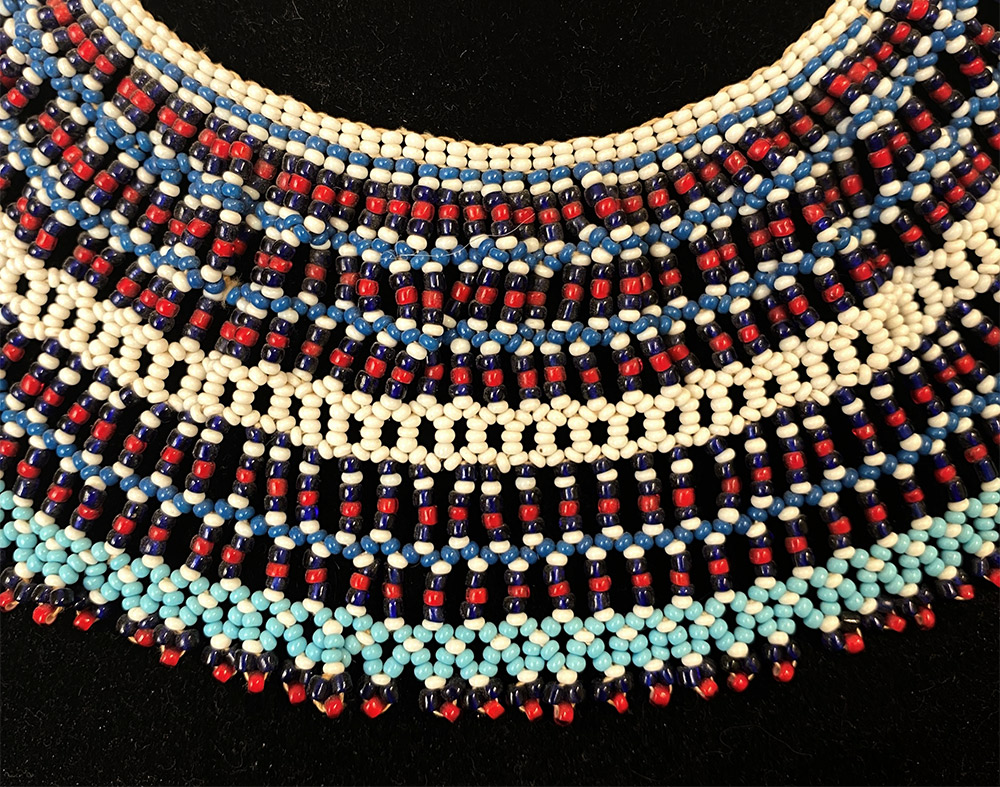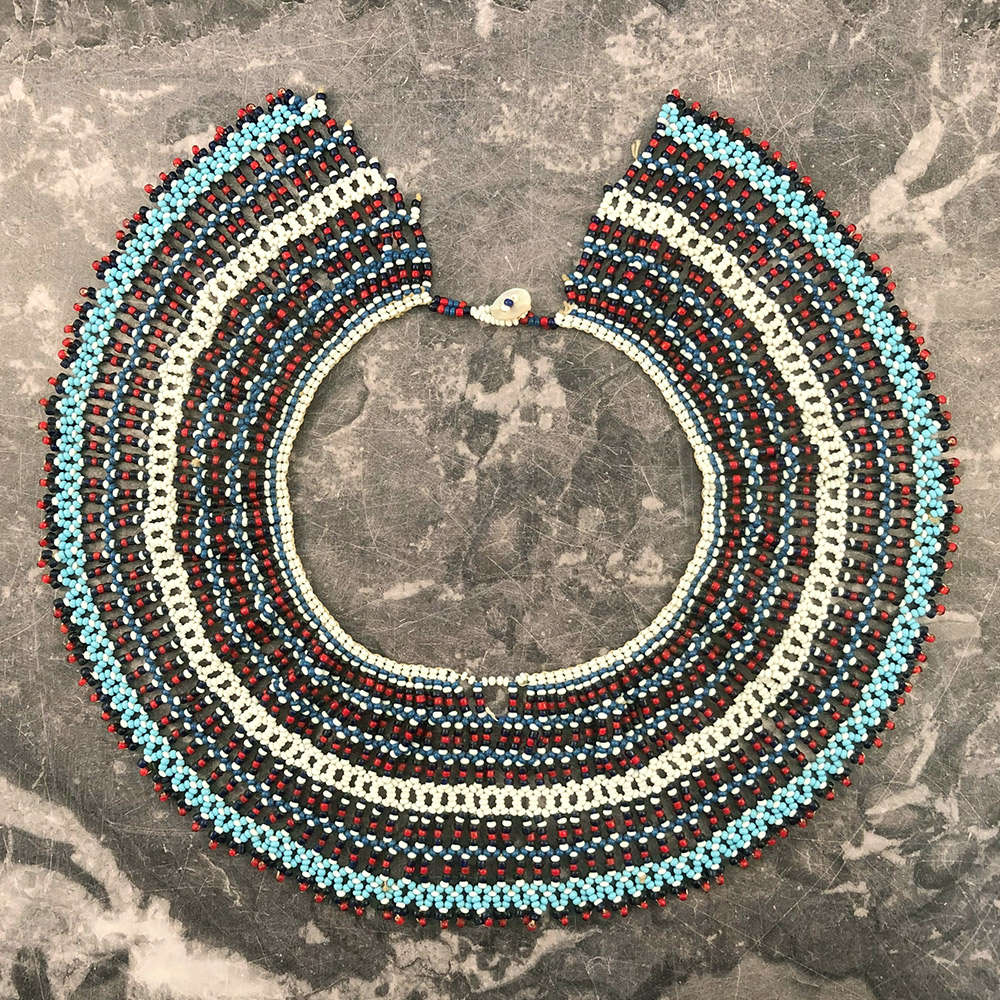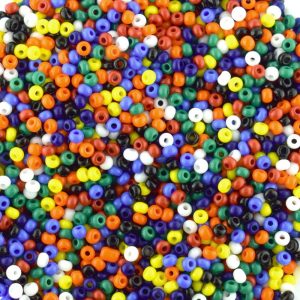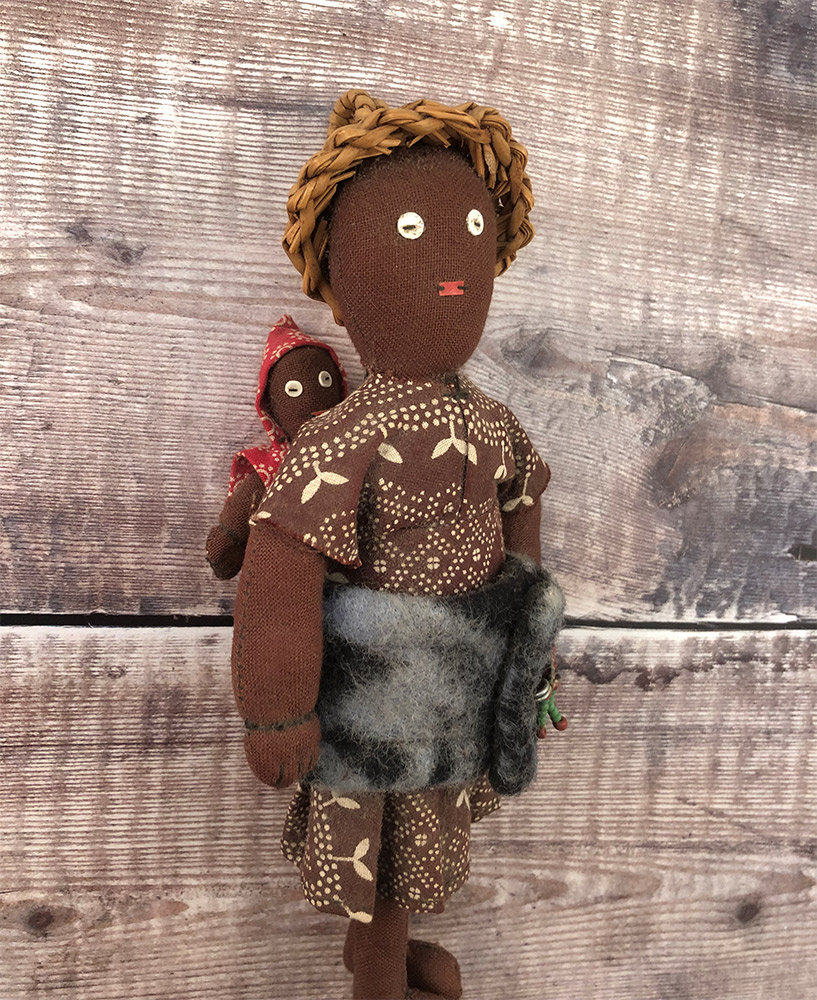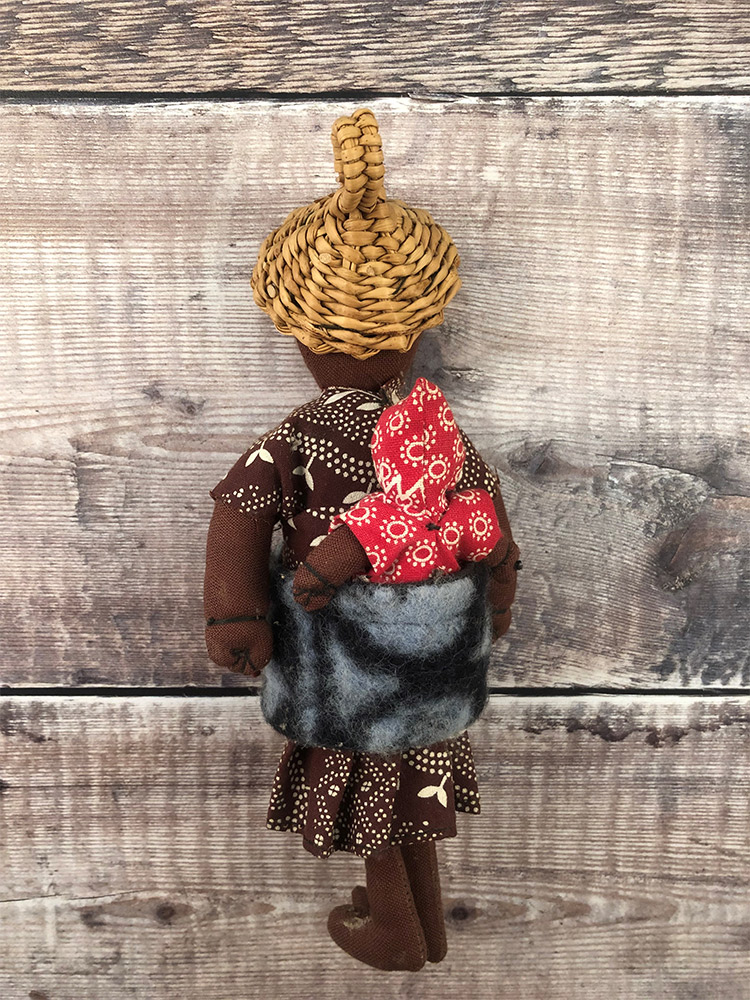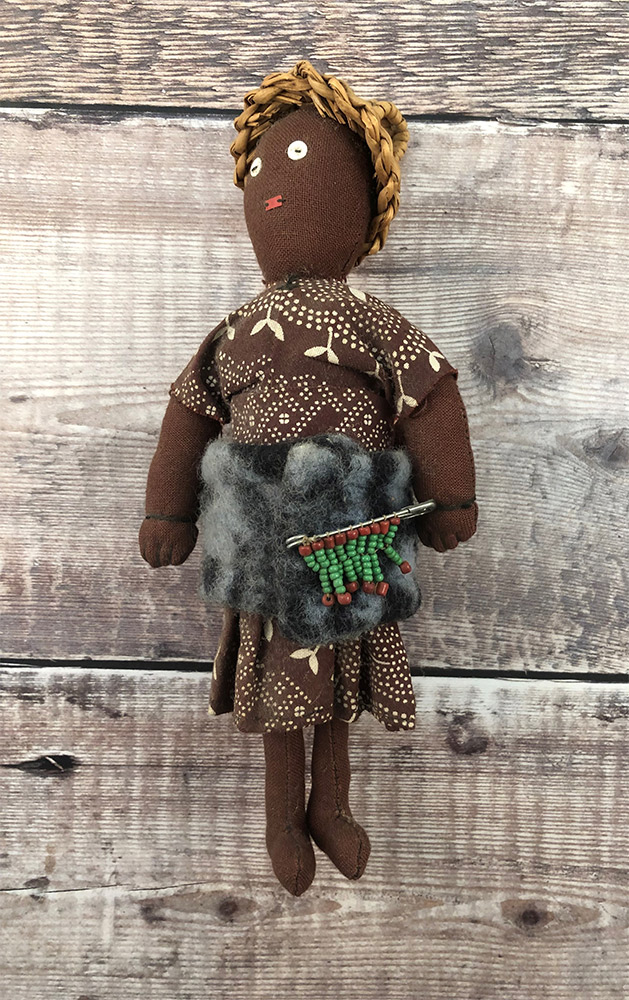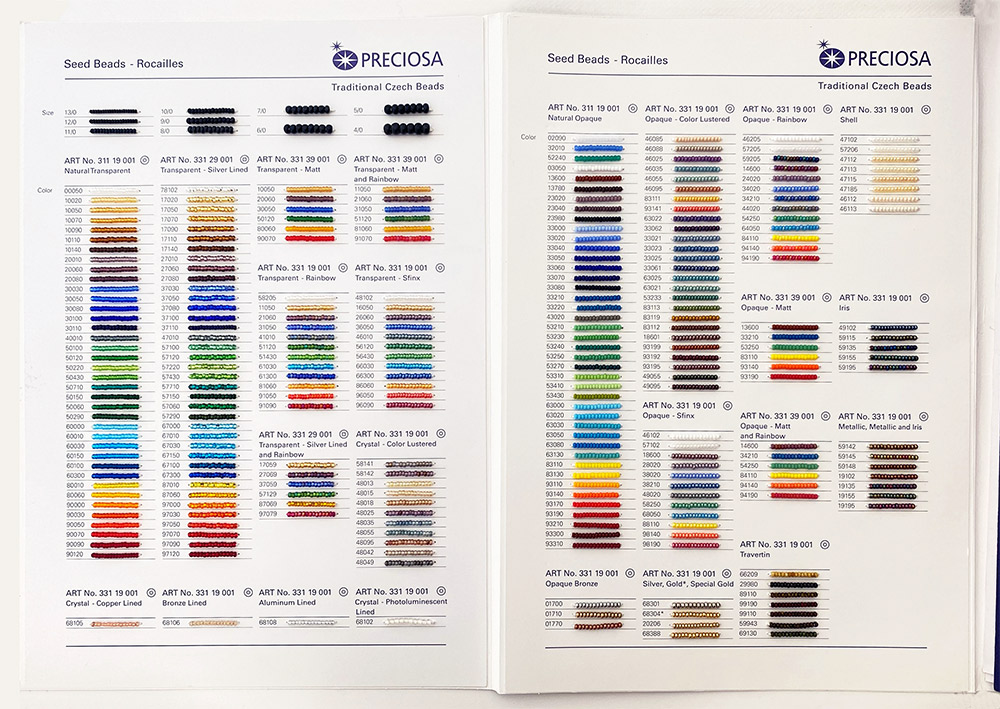I find the history of beading and beadwork fascinating, in particular the story behind glass seed beads in African Beadwork. I’ve been planning to write more blog posts about the history of beads and beading for a while. After being asked if The Bead Shop was doing anything for Black History Month I thought I’d start by writing about the use of seed beads in traditional African beaded jewellery.
My first memory of beads was seeing African beadwork at my Grandmas house. My Great Aunt Hettie married the Suffragan Bishop of Cape Town in the 70’s. Hettie would send traditional African crafts as gifts, including this mother and baby doll (sent, I think, to me when I was a baby). I remember loving that the mum carries her baby on her back and often thought of this doll when I was carrying my daughter on my back.
I didn’t know about the history of beads until I started The Bead Shop and started collecting beading books! Then in 2005 I (briefly!) attended university to study 3D Design in Silversmithing & Jewellery and soon found a way to incorporate beads into this. One of the first pieces of work I presented was on; The use of glass seed beads in traditional African jewellery.
Geometric patterned beadwork of bright mainly primary colours made from seed beads is easily identified as a traditional African piece. However these beads aren’t manufactured in Africa and were only introduced in the late 17th century. Even then it was a while before their use became commonplace. Before the 19th century Zulu people wore virtually no beads and when they did they were of natural materials. (Source; Beads & Beadwork of East & South Africa by Margaret Carey https://www.si.edu/object/siris_sil_322965)
Africa has a long history of importing larger beads probably from 200 BC. When Arab traders brought various glass beads over from India. Seed beads arrived in Africa from European manufacturers in Venice & then Bolivia (now part of the Czech Republic). Trading (sample) cards showed the range of colours and sizes available to the traders African customers. These trading cards are very similar to the versions produced today by Preciosa. Apart from the fact that a much wider range of colours and finishes are now available they are exactly the same as when they were first introduced to Africa.
Many traditional African items such as necklaces, bracelets, aprons, anklets, belts and headdresses use seed beads. Across Africa the colours and patterns shown in beadwork can communicate age, marital status and the tribe to which the wearer belongs. Zulu Love Letter beadwork spells out courtship messages. The colours of the seed beads and their pattern conveys the message. The origin of an item of beadwork identifiable by the different colours and the styles and methods of making.
Different areas of Africa use different methods of stitching or weaving to make beaded items. The methods used by Zulu beadworkers is the subject of many books. I love learning the techniques in Zulu Inspired Beadwork by Diane Fitzgerald. Although sadly out of print I highly recommend keeping an eye out in charity shops! I have tried several of the patterns in the book over the years and have learnt that they lose their magic when made from silver lined or transparent seed beads.
One method of weaving beads is herringbone stitch, also known as Ndebele stitch after the African tribe credited with inventing it. This fascinating beadweaving technique also has numerous books dedicated to it.
Western tourists often take African beadwork home as souvenirs. With a lot of modern day African beading made specifically for the tourist trade often using non traditional colours. Although I find this sad I wonder if it is helping to keep the traditional techniques alive.
I have noticed in many articles about bead trading with Africa that the less ethical side is missing. Although seed beads didn’t become commonplace in African jewellery until the 19th Century and slavery was legally ended in 1875 there is bound to be some crossover. The V & A holds a collection of larger (than seed bead size) glass beads made in Bohemia and Venice that were a major part of trade with Africa. Many of which were ‘made for use in the African slave trade’. http://www.vam.ac.uk/content/articles/t/trade-beads/. The thought that the exchange of beads for human lives was acceptable is unbelievable. With some glass beads known as ‘slave beads’.
The history of beads and beadwork is fascinating and a topic I’ll always want to learn more about. Originating in 30,000 BC beads have a long and varied past. I think I’ll always be most interested in the history of bead weaving and all the different techniques. In particular the bold colours and clever stitches of Zulu beadwork. If you’d like to learn more about the history of beads I recommend reading The History Of Beads by Lois Sherr Dubin.

